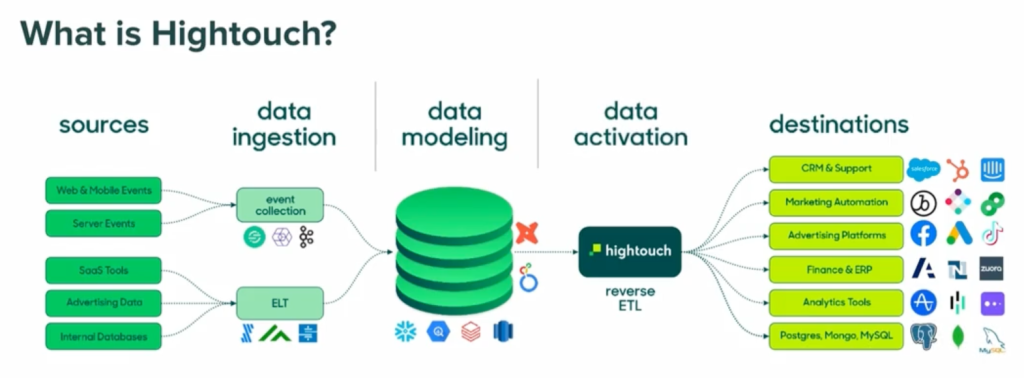Competition for consumer attention is as fierce as it’s ever been. Brand visibility is the holy grail of success, yet the challenge is making your brand stand out amidst the constant barrage of information fed to the average citizen.
89% of Americans check their phone within 10 minutes of waking up. That means they’ve already glazed over tens and hundreds of marketing messages before they’ve left their bedroom!
How do you stop the scroll?
Two strategies — cross-promotions and co-branding — yield remarkable results when used effectively.
Think of cross-promotion as a partnership between brands. It’s akin to two businesses teaming up to help each other grow. Their products and services complement each other, so they leverage that compatibility to tap into each other’s audience through a brand performance strategy.
Co-branding, on the other hand, is where two (or more) brands use their brand names, logos, and other elements to present a joint offering.
In this blog, we’ll cover:
- Why you should consider cross-promotions and co-branding partnerships.
- The psychology of brand visibility and how cross-promotion and co-branding help.
- The steps to create a successful cross-promotion or co-branding campaign.
And we’ll throw in some examples along the way! Let’s dive in.
Table of Contents
Why should you consider cross-promotions and co-branding partnerships?
Because they work.
As insanely popular as Adidas is, they increased their annual revenue by almost a fifth through a collaboration with Kanye West’s shoe line, Yeezy.
And it’s not just big brands who benefit. Any brand can take advantage.
Here’s why:
The psychology of co-marketing campaigns (more on that below) means the sale becomes much easier.
Almost 70% of consumers are happy to make a purchase upon viewing co-branded advertising. That’s all without requiring further qualification through a sales representative.
As if that wasn’t enough, 71% of surveyed Americans enjoy co-branding and cross-promotion initiatives — especially if they solve a unique problem or offer fun and exciting new products.
In other words, choosing the right partner is crucial to your campaign’s success.
But you don’t even need to be in the same room. Thanks to technology, remote collaboration is as easy as ever with your potential partner.
The psychology of brand visibility and how cross-promotion and co-branding help
At a basic level, you, as a marketer, know why brand visibility matters. If people don’t know you exist, they can’t become loyal customers.
To create a lasting impact, it’s crucial to understand the psychology of brand visibility.
The human brain is wired to seek familiarity and trust. A brand becomes familiar to consumers when it’s consistently visible.
The visibility breeds familiarity. The familiarity triggers a cognitive bias known as the mere exposure effect. That’s where people tend to develop a preference for things they’ve seen or encountered more often.

When consumers repeatedly see brand messages, it subconsciously builds reliability and trust. And trust equals loyalty and sales.
And you can super-speed the mere exposure effect if you cross-promote or co-brand with others.
When two brands collaborate, they have instant access to each other’s audience, which would be impossible (or at least take considerably longer) without the brand partnership.
When reputable brands collaborate, consumers perceive the resulting product or campaign as more trustworthy and reliable. This psychological phenomenon is known as trust transfer, where the positive attributes of one brand can influence perceptions of the other.
Both cross-promotion and co-branding harness the psychology of social proof. When consumers witness two brands working together, it creates a sense of social validation.
People are more inclined to trust and engage with brands endorsed or associated with others they already respect or admire. This social validation strengthens the psychological connection between brands and their target audience.
4 steps to create a successful cross-promotion and co-branding campaign
Follow these four simple steps to start your cross-promotion or co-branding campaign today.
Step 1: Identify complementary partners
Start by identifying brands that share a target audience or have complementary products or services. The collaboration should instantly make sense to your potential customer to ensure the co-branding efforts pay off.
StudioSuits and Kyla Bowie Creative are great examples of co-branding in action.
The former is a distinguished clothing brand renowned for crafting personalized wedding suits for men. The latter is a local wedding photographer specializing in inspired wedding photoshoots.
This dynamic partnership extended beyond the lens, as both brands harnessed the potency of cross-promotion on platforms like Instagram.

Through mutual sharing and tagging, StudioSuits showcased visually captivating wedding shots capturing their refined attire. Meanwhile, Kyla Bowie Creative spotlighted the craftsmanship of StudioSuits’ suits in action.
This strategic cross-promotion not only enriched their content but broadened their reach as each brand tapped into the other’s follower base.
From StudioSuit’s perspective, the collaboration made sense as high-quality product images are essential in boosting sales. At the same time, Kyla Bowie Creative has the chance to flex their creative muscles.
Moving on to the example of Tailor Brands. This example shows how co-branding instantly allows you to deliver a more holistic service without investing in additional in-house resources.

How? Tailor Brands helps new businesses set up almost everything they need — from the legalities of LLC formation and opening a business bank account to creating a logo and other branding material.
However, their personal expertise and service are limited regarding tax laws (further complicated by different local tax laws). Instead of forgoing this service entirely, they link arms with a brand that knows sales tax permits inside and out.
In other words, they strategically partner with the right co-brander (Avalara) to extend their service offerings and ensure their customers get the right licenses to comply with tax laws.
That way, Tailor Brands remains the one-stop shop for setting up a business while sending qualified leads into the open arms of Avalara. A true symbiotic partnership in action.
Co-branding isn’t always flashy. In fact, co-branding that solves multiple customer pain points works the best.
Step 2: Define clear objectives
Establish specific and measurable goals for the cross-promotion campaign. These could include increasing brand awareness, driving website traffic, growing your email list, or increasing sales.
Having well-defined objectives will help you track progress and measure the campaign’s success.
Take, for example, Cruise America, a leader in the used RVs industry. Recognizing the complementary nature of their offerings, Cruise America embarked on a co-branding initiative with prominent campground chains.

The goal of the partnership? Increasing brand awareness for all parties involved while delivering a seamless travel experience for van enthusiasts.
Establishing a clear objective from the get-go helps you hone in on the mission at hand without getting distracted along the way. That way, you can allocate the proper team and resources to get the results you crave.
Step 3: Collaborative content creation
Even if the partnership makes sense on paper, that doesn’t mean it’s destined for success.
Crafting compelling and engaging copy and content is crucial, whether videos, images, or graphics for blog posts or your social media platforms.
For example, here’s a custom graphic for a partnership between uSERP and ClickUp.

But to go along with your fancy visuals, you need the right written copy to convey your mutual vision.
Thankfully, you can easily create engaging copy for your digital marketing campaigns with an AI writer. But why an AI writer over a freelancer or in-house employee?
With artificial intelligence, you can change the tone of your writing so it rewrites the promotion in the desired brand voice. And it can do it in seconds (instead of hours, days, or even weeks).
It’s definitely a tool that can help spearhead your cross-promotion initiative while saving you time and money along the way.
Step 4: Track and measure results
Successfully managing cross-promotions and co-branding initiatives requires a keen understanding of data from multiple platforms. Thankfully, platforms like Hightouch help streamline this process.
How? You can seamlessly integrate all your data workflows into a single source of truth. That way, you’ll always have a pulse on your collaborative marketing efforts and be well-informed and optimized for maximum visibility.

After all, tracking and measuring results is the key to understanding what’s working and what’s not. Use these key performance indicators (KPIs) to track how your campaign is performing:
- Website traffic
- Engagement metrics
- Conversion rates
- Sales attribution
A data-driven approach empowers you to make informed decisions, optimize strategies, and allocate resources more effectively for future initiatives.
Cross-promotions and co-branding in 2024 and beyond
With it becoming increasingly difficult to stand out, it makes the most sense for brands to quickly identify co-marketing partnerships.
Why? To enjoy the mutual benefit of connecting with a larger audience and providing value that otherwise wouldn’t be possible.
The stats show they work. Consumers love to see it. And it’s the easiest way to deliver a unique experience.
So, make a short list of brands you’d love to partner with and start your outreach effort today. You won’t regret it.

Kelly Moser is the co-founder and editor at Home & Jet, a digital magazine for the modern era. She’s also the content manager at Login Lockdown, covering the latest trends in tech, business and security. Kelly is an expert in freelance writing and content marketing for SaaS, Fintech, and ecommerce startups.
